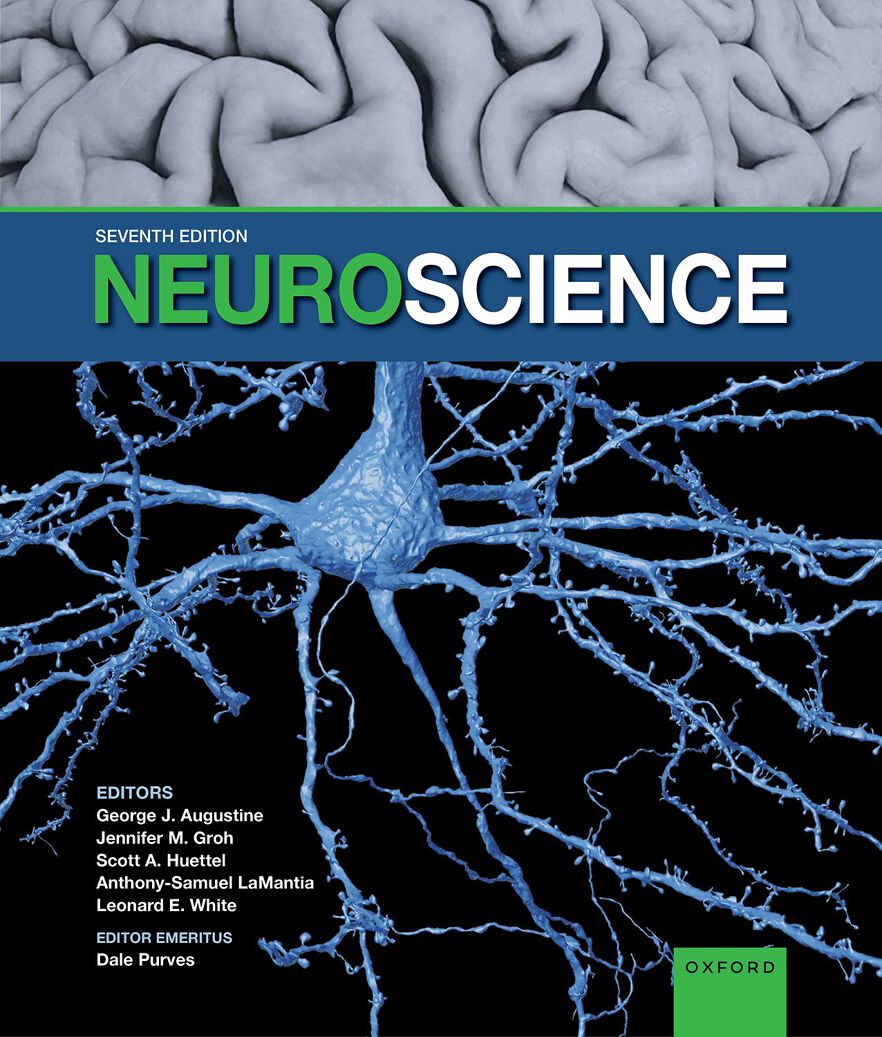Neuroscience

Neuroscience
|
ISBN: |
9780197616246 |
|
Binding: |
Hardback |
|
Published: |
7 Jan 2023 |
|
Availability: |
94
|
|
Series: |
$260.00 AUD
$299.99 NZD
Add To Cart Request an inspection copyDescription
For over 25 years, Neuroscience has been the most comprehensive and clearly written neuroscience textbook on the market. This level of excellence continues in the Seventh Edition, with a balance of animal, human, and clinical studies that discuss the dynamic field of neuroscience from cellular signaling to cognitive function. New learning objectives, and more concise sections make the content even more accessible than before.
Neuroscience provides a bridge between the undergraduate and medical school worlds. It brings the relevance of neuroscience to both those exploring careers in the field as undergraduates and those developing core neuroscience understanding for medical school. It accomplishes this by presenting a balance of animal, human, and clinical studies that discuss the dynamic field of neuroscience from cellular signaling to cognitive function.
Neuroscience, Seventh Edition, is available with Oxford Insight. Oxford Insight pairs best-in-class OUP content with curated media resources, activities, and gradable assessment, in a guided learning environment that delivers performance analytics, drives student engagement, and improves student outcomes.
The eBook offers a mobile experience and convenient access along with functionality tools, navigation features and links that offer extra learning support: Find the eBook on VitalSource.
New to this Edition
- Enhanced organization to be more accessible
- Two new editors that lend their expertise to unit 2 and 3
- Learning objectives have been added to support better understanding
- Updated research: many topics updated or expanded to include new discoveries
- Several figures have been updated for clarity
- Reorganized "The Changing Brain" feature to clearly define the cell biological principles
Contents
Authors
Edited by George J. Augustine
Jennifer M. Groh
Scott A. Huettel
Anthony-Samuel LaMantia
Leonard E. White
Emeritus Editor Dale Purves
George Augustine is a neuroscientist known for his work on presynaptic mechanisms of neurotransmitter release and his contributions to the development of optogenetics, a tool to control neural activity using light. He is Professor of Neuroscience and Mental Health and the Irene Tan Liang Kheng Chari Professor in Neuroscience at Nanyang Technological University in Singapore. Jennifer Groh studies how the brain processes spatial information, with a particular emphasis on vision, hearing, and eye movements. She is the author of an award-winning popular science book on these topics. Dr. Groh is Professor of Neurobiology and of Psychology and Neuroscience at Duke University, where she also holds secondary appointments in Computer Science and Biomedical Engineering. Scott Huettel studies the neural mechanisms of decision making and has been recognized for his work in social neuroscience and neuroeconomics. He is a Professor of Psychology and Neuroscience at Duke University, where he also holds secondary appointments in Neurobiology and Psychiatry and Behavioral Sciences. Anthony-Samuel LaMantia has defined genetic and cellular mechanisms of neural circuit development in the olfactory system, the hindbrain, and association areas of the cerebral cortex, as well as how they are disrupted in neurodevelopmental disorders. He is Professor and Head of the Laboratory of Developmental Disorders and Genetics and Director of the Center for Neurobiology Research at the Fralin Biomedical Research Institute, Virginia Tech-Carilion School of Medicine, and Professor of Biological Sciences at Virginia Tech. Leonard White studies the structure and connectivity of the mammalian brain using ultra high-resolution magnetic resonance imaging and lightsheet microscopy. He is at Duke University where he serves as an educator at the graduate/medical school and undergraduate levels. He is an Associate Professor in Neurology, Associate Director of the Duke Institute for Brain Science, and Director of Undergraduate Studies in Neuroscience.
Lecturer Resources
Lecturer resources to accompany Neuroscience 7e
- Figure PowerPoints
- Lecture PowerPoint Presentations